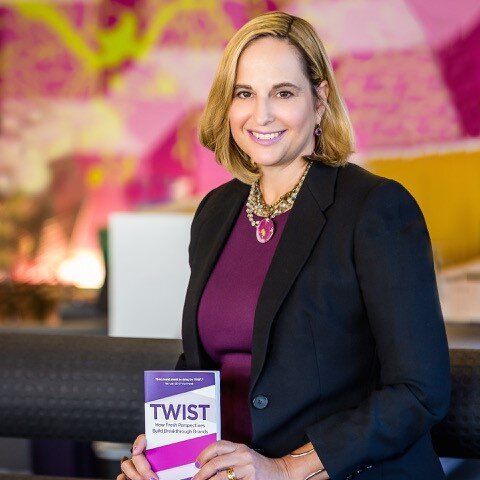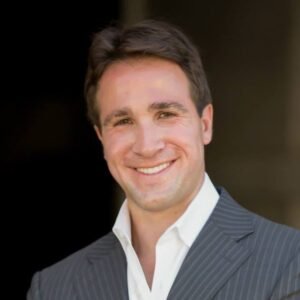I recently spoke to Julie Cottineau, a brand innovation expert and the author of TWIST: How Fresh Perspectives Build Breakthrough Brands. Julie is the CEO BrandTwist and previously worked with Sir Richard Branson as Vice President of the iconic Virgin brand, where she oversaw branding strategy for new Virgin companies in North America and provided strategic brand support for existing companies.
Adam: Thanks again for taking the time to share your advice. First things first, though, I am sure readers would love to learn more about you. How did you get here? What experiences, failures, setbacks or challenges have been most instrumental to your growth?
Julie: I’ve been branding since the age of eight years old. My parents wouldn’t let me have a dog because my brother was allergic. Like most kids, I didn’t take no for an answer. But I did go into my backyard garden, find a rock and put it in a Cool Whip container. I poked holes in the container so my new pet could breath and I put grass in it for food. Voila! I created the Pet Rock! A few years later, Gary Dahl (stole my idea) and created the official Pet Rock and made millions of dollars on this fad. I was so mad when I saw it in the toy stores. But it also set me on path through a career in advertising, branding, brand education and working on the client side of looking at old problems from new angles to create fresh solutions. This is what I call Twisting and it’s the reason I named my book and my company BrandTwist.
Adam: Other than Virgin, what brands do you admire most and why? What makes a brand great? And what are your best tips for brand managers?
Julie: Hmmm. Asking for a favorite brand is like asking me to pick a favorite child. But a lot of the brands I love fall in the category of brands that take the time to get to know me and give me fewer, highly curated choices. One example of this is Stitch Fix – the personal stylist fashion brand. They get to know my style and my specific needs. For example, I do a lot of public speaking and media appearances and I only wear my brand color purple when I present. I am always on the hunt for new purple dresses, tops and blazers. Stitch Fix sends a monthly curated box with only 5 items (most of them shades of purple or things that mix and match well). I don’t always keep every item. But they learn my preferences through what I keep, what I return and the comments I provide on the items. They do a good job of using this information on future “Fixes” and overtime I feel like I am in a true brand relationship and not just a transaction. Netflix, Amazon, Audible, Blue Apron are also examples of brands that I think get to know their customers preferences and use them to improve the brand experience.
My best tip for Brand Managers is to take off your brand blinders. Most Brand Managers spend so much time looking at what direct competitors do that they end up creating experiences and marketing messages that blend in with all of the other brands in the same category. My whole Twist approach is about looking outside of your category for inspiration and then Twisting that with your brand for new ideas. It came from a moment of inspiration I had in an airport. I thought I saw an airplane with McDonald’s golden arches on the tailfin. I started to think about how this airline would be family friendly, have a menu of easy to order options (like supersizing your economy seat to something more luxurious) and have brighter colors and friendlier staff. It turns out it was just a mirage. The reflection of the food court sign on the window with a jet that was parked on the tarmac. But this mirage changed my whole attitude and approach on building brands that breakthrough and get noticed in crowded categories.
Adam: What are the best lessons you learned from your time in Virgin and from Richard Branson in particular? What are some of the secrets behind Virgin’s highly successful branding?
Julie: Richard has a saying “Screw it! Let’s Do it!” I love this approach and I’ve embraced it in my own work. It’s about taking calculated risks, and not being afraid to try new things. I think this is really important during this COVID-19 crisis. What have you got to lose? Richard also says, “Fail Harder” and has created a brand culture that questions the status quo, and is constantly striving to offer something different, better and more valuable to its customers.
I think many people also see Richard Branson as a great entrepreneur (which he is) but I also enjoyed getting to know him as a person. He is a bit shy one-on-one, with a huge heart. I love the relationship he has with his family, particularly his mother Eve who is 95 and still going strong. Richard puts an emphasis on people, particularly employees. He believes in keeping employees happy first, and then they will be great ambassadors for the brand. He also believes in hiring for attitude and training for skill. I have taken all of these lessons forward with me when I left Virgin to start my own business. I am also fortunate to keep working with them today, and to keep learning from my Virgin clients.
Adam: What are your key messages for entrepreneurs and business leaders on how they should approach uncertain times like the one we are in now? What should we be doing differently? And what should we do and what should we not do?
Julie: Periods of great disruption can breed interesting innovation. Lately, I’ve been running webinars and live chats about the concept of boosting your brand immunity and twisting uncertainty into opportunity. We talk about three critical strategies: 1) Twisting your target audience, 2) Twisting your offering and 3) Twisting your business for the greater good. Twisting your offering is about looking at new ways to deliver your products or services that take into account how people are feeling and behaving right now. I saw an article that says Wal-Mart is seeing an uptick on tops right now, but no bottoms. That’s because telecommuting means that we are all paying more attention to looking professional from the waist up, and comfortable in leggings or maybe event pajamas from the waist down. But many people are still trying to push the “whole outfit” metaphorically speaking. I’ve been exploring how you can prioritize what people need right now (vs. what you are used to selling). Twisting your target audience is about reaching out to a new target that might need exactly what you have. For example, brands like Enterprise Rent a Car are relaxing restrictions on younger car renters so college students can get home or get back to their dorms to pack up. The New York Times published a section for kids in the Sunday paper – likely keeping kids occupied so parents could carve out a little crossword time. Twisting for the greater good is showing you care, while also communicating your core brand promise, and bringing in some needed income. Many businesses are showing amazing acts of kindness, supporting communities in need. For example, many pizza parlors are offering “dough for dough” promotions giving customers the ability to add $13 on to their order and send a pie to a local first responder team. It’s about finding a way to give back and also keep the lights on.
Adam: More broadly speaking, what should all entrepreneurs and business leaders understand about branding? What are your best tips on the topic of branding for those at the top of their respective companies?
Julie: How much time do you have? I’ve got a lot to say on this subject. I will try to boil it down. I think that entrepreneurs and business leaders often misunderstand the fundamental definition of brand. They look at it as a name, logo or website. Your brand is actually a story, and great brands are stories well-told. You tell that story through your marketing of course. But more importantly you tell it through your whole brand experience. Your products, services, the people you hire, the way your office looks, even your on-hold music or the 404-error message that might pop up. These are all opportunities to communicate your story – with a TWIST. Your brand is your business. And we all work in brand. From the CEO to the receptionist, you all need to be well-versed in telling the same story. The CEO is the chief narrator and the way he or she behaves, not just talks, sets the tone. Stop telling everyone you are a people-first business if you are emailing your employees with questions at night or on the weekend. Walk the Talk for your brand values.
Adam: What are your best tips on the topic of personal branding?
Julie: I love this topic. For the past three years I have had the pleasure of guest lecturing in a class called #ProjectYou at Stanford University Graduate School of Business. It was created by Professor Allison Kluger Shaw (my roommate from UPenn) and supermodel businesswoman Tyra Banks. Tyra says that “different is more important than better.” And I agree. Personal branding is about telling an authentic story about who you are and why people should want to work with you, hire you, or invest in your company. But like commercial brands, personal brands need a TWIST. I work with the students (and other CEO clients) to build their personal brands. Often this is about combining your personal and professional passions. I have a Brand School client who is a high-end kitchen designer, and an amateur ballroom dancer as a hobby. We combined these two concepts and relaunched her business as Kitchen Choreography.
Adam: What is the single best piece of advice you have ever received?
Julie: When I was working in Grey Paris, my boss (a Frenchman) told me that I should be less American in my response to client questions and issues. Meaning that Americans think they have to have the answer right away. He told me that in France, responding too quickly actually undermined your credibility and could make clients nervous. He suggested waiting a 24-hour period to get back to them, even if you replied with the same answer that came to you right away. Plus, many issues resolve themselves in 24 hours. This was in 1995 – so the pace of business was a bit slower and text and IM were not as prevalent. But I do still adhere to this. I try not to have knee jerk reactions and I do find that sleeping on issues before responding does give me additional perspective. A lot of issues do resolve themselves, or at least morph into something more manageable, with time. Merci Henri for this advice!
Adam: Is there anything else you would like to share?
Julie: Just to say thanks. These are great questions and I had a lot of fun answering them.









